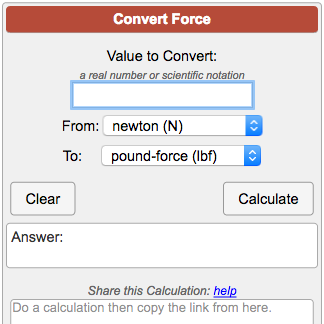Inches To Centimenter Can Be Fun For Anyone
Wiki Article
Facts About Inches To Centimenter Revealed
Table of ContentsInches To Centimenter Fundamentals ExplainedAll About Inches To CentimenterWhat Does Inches To Centimenter Mean?Some Ideas on Inches To Centimenter You Should KnowInches To Centimenter Things To Know Before You Buy
This treatment for establishing the called for conversion element matches exactly to Jeremy's manual technique: "To establish an unit conversion factor, established the criterion worth to 1 in the user interface, then figure out the value returned by the API; this will give you the exact conversion element in between both." Even more, we can really have Revit transform that value to a very various set of systems of action.That conversion is done utilizing the As, Value, String strategy. If you discover the sample code you will possibly gain some even more understandings into just how Revit works with criteria and also devices of procedure.
To convert in between systems, you're normally given one action and asked to convert to another procedure. You'll be offered some quantity in "gallons" as well as be asked to transform the volume to "fluid ounces". They will have provided you (or else you can easily find) the conversion units that appropriate to the task.
To transform from one device to another, here's the really simple guideline: going to smaller sized units meansgoing to bigger numbers, so multiply mosting likely to bigger devices meansgoing to smaller numbers, so separate Quarts are smaller than gallons; every gallon has 4 quarts. Given that I'm converting from a larger device (gallons) to a smaller unit (quarts), my solution requires to be a bigger number.
The Inches To Centimenter Statements
Given that I'm converting from a smaller sized system (lawns) to a bigger unit (miles), my answer requires to be a smaller number. So I separate: After that: Note: The over conversions were in between 2 "Imperial" (or, actually, "American") devices. Transforming between two statistics systems is a lot less complicated!.?.!! The above are examples of one-step conversions between units of the same type; specifically, Imperial systems.
Note: I'm not chatting right here about numbers "cancelling out", like when you're increasing fractions. Instead, I'm speaking regarding treating the systems (" feet", "cubic centimeters", "seconds", and so on) as though they were numbers, and terminating them. inches to centimenter. Among these measurements remains in terms of "miles per hr" and also the other is in terms of "meters per 2nd".
These variables provide links, one means or another, in between "seconds" as well as "hrs" as well as between "miles" and "meters", so you can find out more they'll obtain the job done. To contrast these 2 rates of rate, I need them to be in the exact same devices. Flipping a coin, I choose that I'll convert the "80 miles per hour" to "meters per 2nd".
The Ultimate Guide To Inches To Centimenter
I want "hours" to terminate off (in support of "secs", eventually), so the conversion factor for hours and minutes needed to have "hrs" ahead. That suggested that "60 mins" had to be Website below. Which dictated the alignment of the next aspect: Because "60 mins" was underneath as well as since I 'd need "mins" to terminate eventually, after that the "1 min" (from the conversion aspect for minutes as well as secs) had to be on top.And because I'm wanting a last solution of "per seconds", I want the seconds underneath, so this functions out simply. Similarly, what they offered me has "miles" on top so, in the "1 mile to 5280 feet" conversion aspect, I need the "miles" under, so it cancels off.
In the "1 foot to 12 inches" conversion element, I'll need the "foot" on the base; this will place the "inches" on top. The last conversion aspect is "100 centimeters to 1 meter"; because "centimeters" in the previous factor were on top, then I'll require "centimeters" on the bottom, leaving the "meters" on top.
Forty is even more than thirty-six, so: 40 meters per secondly is quicker than 80 miles per hr. Associate This approach of converting devices can in fact be rather valuable: it got me through a chemistry class! I really did not have a hint what the instructor was discussing, yet on the test questions he provided just the specific information required, and also if I established whatever so the units terminated, I always got the right response.
Some Known Factual Statements About Inches To Centimenter
Cancelling systems (additionally referred to as "system analysis" or "dimensional evaluation") is based on the principal that increasing something by "1" doesn't change the value, that any kind of value separated by the exact same value equates to "1", and that (for the objectives of converting between units) a conversion factor (shared as a fraction, as revealed over) is considered as having a value of "1".Many of our customers have actually composed to us to tell us that Uconeer is the best engineering system conversion calculator they have ever before used. Uconeer was created for engineering, technological and also clinical users that need frequent, exact, trustworthy as well as consistent conversions of the practical units and measurements that they utilize on a daily basis.
If you are this kind of individual then we are positive that Uconeer will certainly be the ideal for you.

The Facts About Inches To Centimenter Revealed
That is why we need a system converter to help is in calculations - inches to this hyperlink centimenter. An unit is the action of amount to give value to matter.Report this wiki page